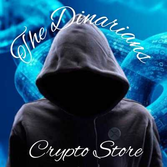As the dust settles on the recent SAG-AFTRA strike, Hollywood finds itself at a pivotal moment, a turning point that demands not just reflection but action. The labor dispute, which echoed from July to November 2023, shone a harsh light on the entrenched issues plaguing the industry. Central to these were the calls for fair compensation and the ethical quandaries brought forth by the use of artificial intelligence in digital performances.
You might also like: Beyond the hype: Web3 is in dire need of a rebrand | Opinion
This strike, rippling across global movie and TV productions, was a clear call for Hollywood to embrace innovation ethically. The resolution of this conflict did more than end a standoff and marked the beginning of a transformative chapter. This is a chapter where the adoption of emerging technologies like web3 and NFTs are crucial in addressing systemic challenges and redefining the industry’s future.
Web3 and NFTs invite Hollywood to be at the forefront of this change, urging them to move beyond conventional approaches to distribution and content creation. There is a path to reshape the very essence of the industry, fostering a fairer, more equitable relationship between creators, their work, and audiences.
Lights, camera, action
In the landscape of modern Hollywood, NFTs are rapidly evolving from a niche novelty to a cornerstone of audience engagement and content distribution. These digital tokens are currently being used as exclusive access passes, offering viewers a gateway to a world of unique content experiences. Imagine owning an NFT that not only signifies ownership of a digital asset but also unlocks a realm of exclusive behind-the-scenes content, special director’s cuts, or even access to virtual events with stars and creators. This isn’t futuristic speculation. It’s a reality unfolding right before our eyes. Studios leveraging NFTs are enhancing viewer engagement by transforming passive viewing into an interactive, immersive experience.
The potential of blockchain technology in personalizing streaming experiences is vast and largely untapped. With its ability to securely store viewer preferences and histories, blockchain can tailor content recommendations to individual tastes with unprecedented precision. The possibilities for customization are endless, from choosing character arcs to influencing plot developments. This changes the user’s experience from watching a story unfold to being part of the storytelling process.
Studios at the forefront of this revolution understand that embracing web3 and blockchain is a strategic move and a commitment to shaping the future of storytelling. By adopting these technologies, they are not just staying ahead in a rapidly evolving digital landscape but redefining what it means to be a leader in the entertainment industry. Adopting web3 and NFTs is financially astute and a bold statement of vision and innovation.
Critics might argue that these technologies need to be simplified or early in their development to have a real impact. However, the studios that recognize their potential and act swiftly will be the ones to pave the way for a new era of storytelling, being a part of a cultural and philosophical renaissance in entertainment.
It’s not a picture
Integrating web3 into viewer loyalty programs transforms the traditional model, offering a level of personalization that conventional systems can’t match. Critics might question the necessity of such an advanced approach, but the reality is that blockchain brings a unique value to viewer engagement. By tracking interactions, studios can provide rewards like exclusive NFTs that open doors to VIP events or virtual interactions with stars, thereby enhancing viewer retention and community building in ways previously unimaginable.
Studios venturing into branding and merchandising with NFTs might be a leap into uncharted waters. Yet, this strategy of blending digital and physical experiences offers untapped potential for audience engagement. Digital collectibles can act as gateways to exclusive real-world experiences, creating a synergy between the allure of the digital and the tangibility of the physical. Although skeptics may see risks in alienating traditional collectors, the reality is that this approach elevates merchandise from mere items to experiences, deepening audience connection to the content.
The integration of NFTs into the collectible market introduces a new dimension of authenticity and exclusivity. The Steve McQueen NFT collection serves as a prime example of how web3 and NFTs are reshaping memorabilia in Hollywood. While there are concerns about accessibility for traditional collectors or less tech-savvy fans, the addition of NFTs broadens the scope of fan engagement, transforming collectibles into valuable, experiential assets.
The fusion of digital and traditional merchandise marks a strategic shift in how studios approach branding. Embracing cross-branding collaborations, companies such as Pog, the iconic ’90s milk-cap game, have expanded into the web3 space. Pog’s history of partnering with major brands like Disney, Pokemon, and Barbie demonstrates the power of such collaborations. While traditionalists may perceive this move into web3 as adding complexity to consumer interactions, it actually reflects and caters to the changing preferences of consumers, crafting a holistic brand experience that connects with contemporary audiences.
Just the first act
The resolution of the SAG-AFTRA strike represents a critical turning point for Hollywood, underscoring the urgency for studios to integrate web3 and NFTs. This evolution isn’t simply about adopting new technologies; it’s about weaving a rich narrative of innovation and inclusivity into the very fabric of cinema. Studios that hesitate, anchored to traditional methods, risk being overshadowed in this vibrant era. Conversely, those who embrace these technologies are not merely adapting to change; they are spearheading a cultural revolution. They are setting the stage for a future where cinema transcends traditional boundaries, empowering every creator and captivating every viewer.
This is not the conclusion of Hollywood’s story but the beginning of its most exciting chapter. It is a chapter where the lines between creator and audience blur, stories are not just told but lived, and the magic of cinema intertwines seamlessly with the marvels of technology. As we embark on this journey, let’s not view web3 and NFTs as mere tools, but as keys to unlocking a world of boundless creativity and connection.
In embracing this new era, Hollywood has the opportunity to redefine not just how stories are told but how they are experienced. It’s a chance to reimagine the industry as a thriving ecosystem of innovation, collaboration, and community. This is the first act in Hollywood’s most ambitious production yet, a narrative that promises to captivate, inspire, and transform. Let the cameras roll on this new age, where technology and art merge to write the future of entertainment.
Andrea Berry is a seasoned online video strategist with over 15 years of experience in transformative media partnerships. Her early successes include helping to launch Qello Concerts, the first direct-to-consumer live-music OTT service, later transforming it into Qello Media Services and Vimeo’s OTT channels offering across various industries as their first strategic sales director for their enterprise. Currently, as the head of business development at Theta Labs, Andrea leverages her expertise in online video and blockchain to drive strategic partnerships and growth opportunities for the company. She helps enterprises take advantage and lean into the opportunities web3 presents.





























